Hungry? You soon will be! Baking remains a popular traditional activity in many Norwegian households. Let's take a closer look at some of the most popular traditional cakes served up in Norway.
I think we can all agree, cakes are awesome! One of the great joys of travelling is discovering new foods. Cakes are one of those things that really allow us to zoom in on a country's culture. I'm delighted to say that Norway is no exception!
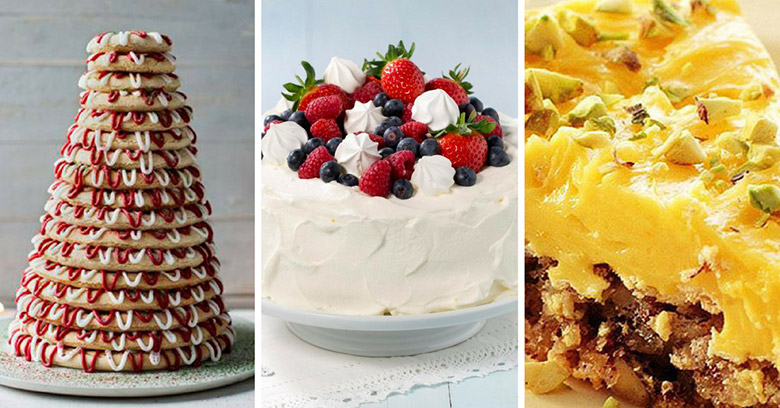
I do see a lot of similarities between ‘cake culture' in Britain and Norway. But then who doesn't love sitting down with a slice of cake and a cup of coffee?
But the types of cakes served on specific occasions do indeed vary. Say “Christmas cake” to a British person and a spiced fruit cake, most likely covered in marzipan and fondant icing, will spring to mind.
But in Norway, it's the seven types of Christmas cookies that are often considered Christmas cake(s).
That's just one example. So as you can see, there's plenty to understand about cake culture in Norway! There's no better way to dive right in with some of the most popular cakes you might see at parties and events in the country.
Some of these have recipes attached, but this is more of an inspiration post than a detailed how to. So, with that in mind, let's get started…
Table of Contents
Norwegian cream cake
Bløtkake is probably the best-known and most-eaten cake on this list. It provides the perfect sweet finish to any celebratory meal, and is eaten year-round.
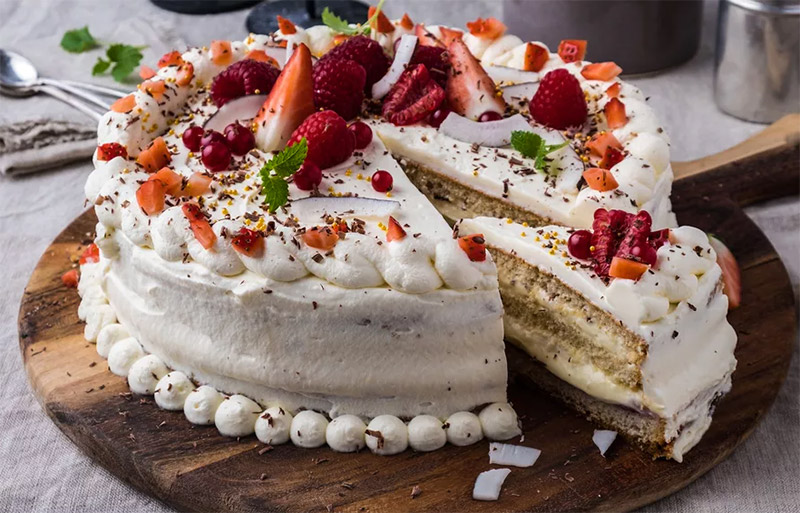
The cake itself isn't difficult to make, but you'll need to practice your decorating skills to get it looking as good as those in these pictures!
A bløtkake is simply a sponge cake, horizontally sliced into three, filled with cream, and usually topped with icing. It's a very traditional recipe, and every grandmother in Norway will have their own variant!
The world’s best cake?
Kvæfjordkake is often labelled as ‘the world’s best’. The meringue, vanilla cream and almond-packed sponge cake is known and enjoyed throughout the land and considered by some to be Norway’s national cake.
The key ingredient is eggs. The whites are used to make the crisp, chewy almond meringue, and the yolks to make both the sponge base and the custard filling.
The cake originates from Kvæfjord, an area close to Vesterålen and Lofoten in the north of Norway. Despite much of the area being mountains and fjords, it's known for agriculture and farming, especially its strawberries.
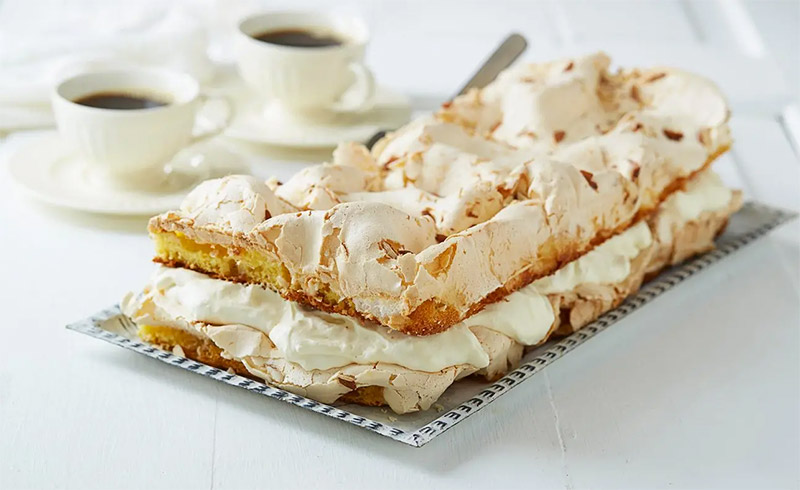
Fun fact: A very similar cake is made in Sweden, although it tends to have more of a fruity kick. Berries are whipped into the cream, or added as a topping.
Norwegian birthday cakes
Bløtkake is also a typical birthday cake. Along with Kvæfjordkake, it’s also typically seen at confirmations, 17th of May celebrations, and other special occasions.
Many times when a bløtkake (or any cake, really) is made for someone's birthday, it is decorated with strawberries and blueberries to form a Norwegian flag. A nice touch!
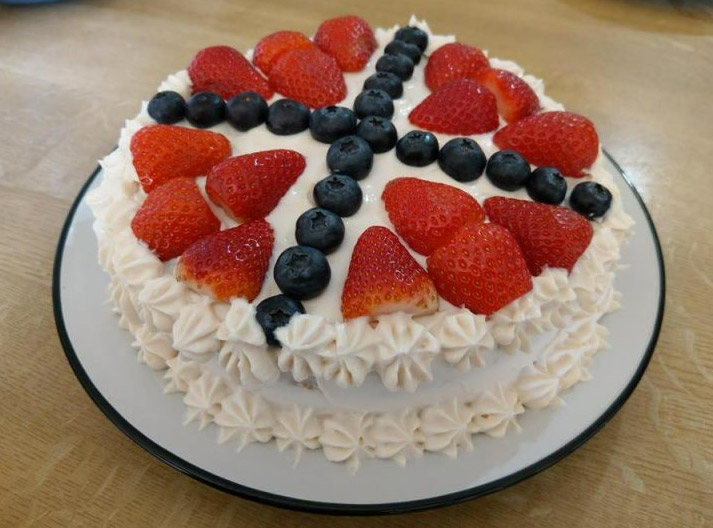
Christmas is a special case. Traditionally a household should bake seven different types of Christmas cookies, which take priority over cakes.
That said, there are cakes commonly seen at Christmas too. Many of those on this page are suitable for the festive period, but perhaps the most common is this one, also seen at weddings…
Norwegian wedding cake
There is no one typical cake served at a Norwegian wedding, but there are some that are much more common than others. Perhaps the best known is the spectacular kransekake, also commonly served at christmas time. A well-made kransekake is quite the sight:
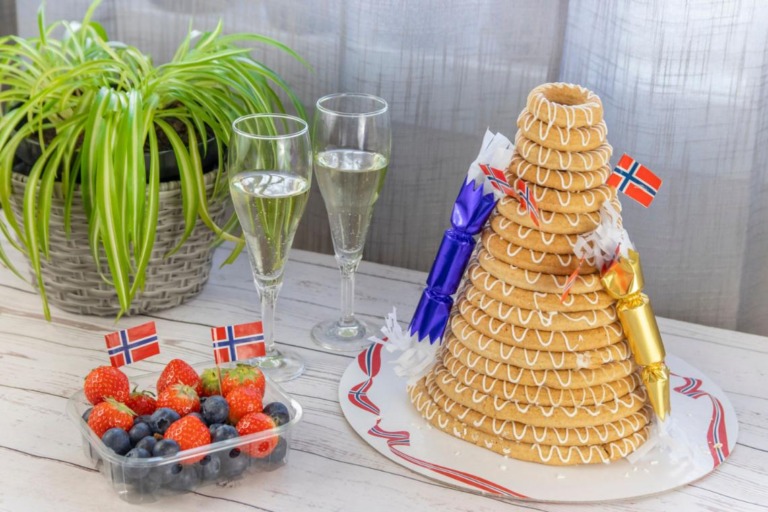
Despite its initial appearance, the cake itself is relatively simple to bake. As you can tell, all the effort goes into the composition!
The concentric rings are made with almonds, sugar and egg whites – they should be hard to the touch but soft on the inside – and stuck together with white icing. A full kransekake is made up of 15-20 layered circles forming a cone.
Although its origins can be traced back to Denmark, this cake seems to be identified more with Norway these days. It's quite normal to see little Norwegian flags dotting the sides, along with small crackers at its base if used as a Christmas cake.
Norwegian apple cake
Another cake that's super easy to bake and great for using up those spare apples, or when there's an offer on at your local supermarket!
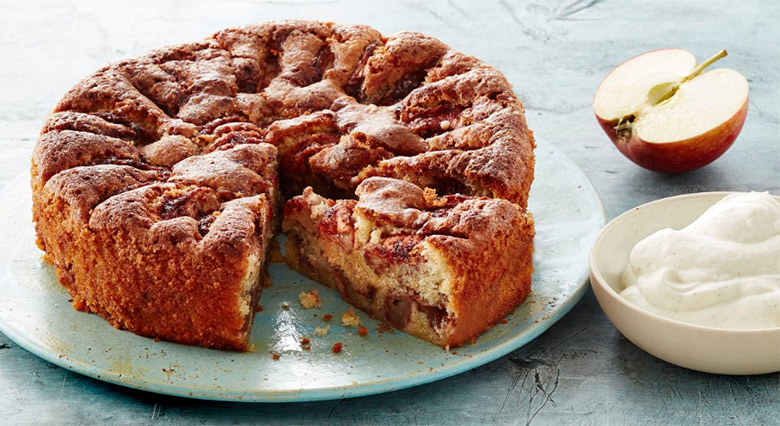
Nothing tastes more like autumn than enjoying a slice of still-warm apple cake fresh from the oven, with whipped cream on the side. Invite over some friends and voila, instant koselig!
This is the kind of cake that's often found in smaller independent coffee shops and offered up as a dessert in the more traditional Norwegian restaurants.
Success cake
Ask a Norwegian about suksessterte or suksesskake and chances are they’ll have fond memories of it from growing up. It’s one of the most cherished cakes in Norwegian society, and often features at office celebrations.
Layers of almond meringue with a vivid yellow custard cream made of egg yolks, sugar, cream and butter are the distinguishing features of this treat.
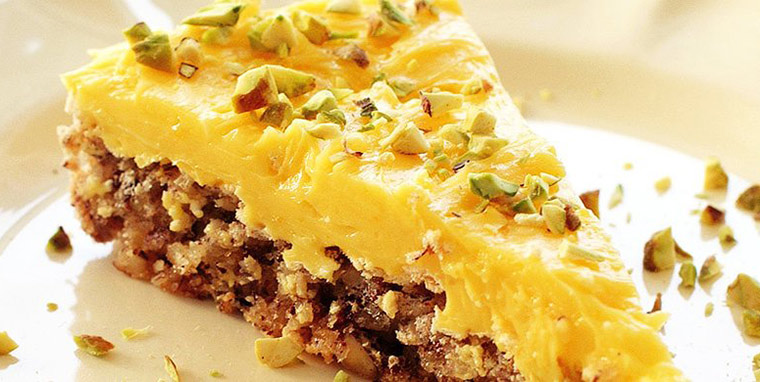
Because of the absence of flour in the recipe, it’s low-carb, gluten-free and freezes well. Unfortunately the high number of nuts and eggs in this one makes it one to avoid for many allergy sufferers!
One curious thing I’ve noticed about success cake and success tart is the sheer number of varieties. There are so many different ways to make this, so if you think you’ve tried it, think again!
Do you want to know how to make just one version of suksesskake? Check out our recipe.
Other popular cakes
While not especially Norwegian, these cakes are all common in Norway and deserve a mention on this list!
Marengskake is essentially pavlova, often decorated with fresh berries.
Sjokoladekake is chocolate cake. Nothing more to be said here, really!
Krydderkake is a spiced cake, usually flavoured with cinnamon, cardamom and ginger. The method and texture is similar to carrot cake.
Of course, there are many more traditional cakes, but this should be enough to get you started.
Home baking in Norway
Like in many countries, home baking seems to be much less popular in Norway than it once was. Go into any supermarket and you'll see ‘instant mix' packets available for brownies, boller, and other simple baked goods.
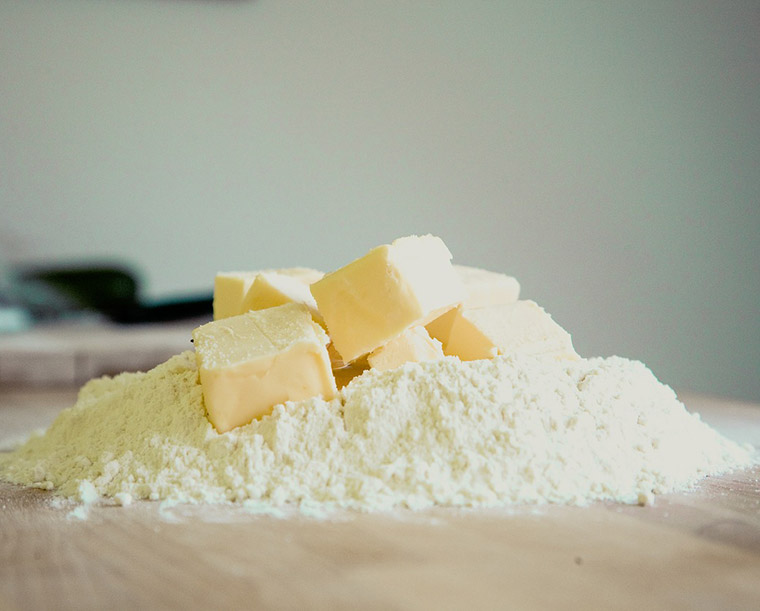
Somewhat unusually for a 36-year-old man, I rediscovered a long-lost love for baking earlier this year and have been churning out cookies and cakes ever since.
But home baking in a foreign country always presents a challenge when you're used to the ingredients from ‘back home'! Some things I've noticed:
- Self-raising flour isn't a thing in Norway. However, it's a fairly simple process to make your own by adding baking soda, baking powder, and a little salt to regular flour.
- They might not have self-raising flour, but there is a dazzling variety of other types of flour! This is especially surprising given how little choice there for most other products in a Norwegian supermarket. Get ready for havre, hvete, rug, spelt, bygg, fin, fullkorn, siktet, sammalt, and several more for those making specific types of bread. Phew!
- It's been a real challenge to find caster sugar, which is an extremely fine sugar very common in British recipes, but I've managed it! The supermarket chain Meny sells ‘engelsk sukker' (English sugar!) although they are frequently out of stock.
Are Norwegian cakes healthy?
Modern lifestyle preachers tell us to eat less, count calories, exercise more, reduce fat, and cut out anything even close to junk food. Cake? We may as well forget it, right? Not necessarily, says one researcher from the Australian National University.
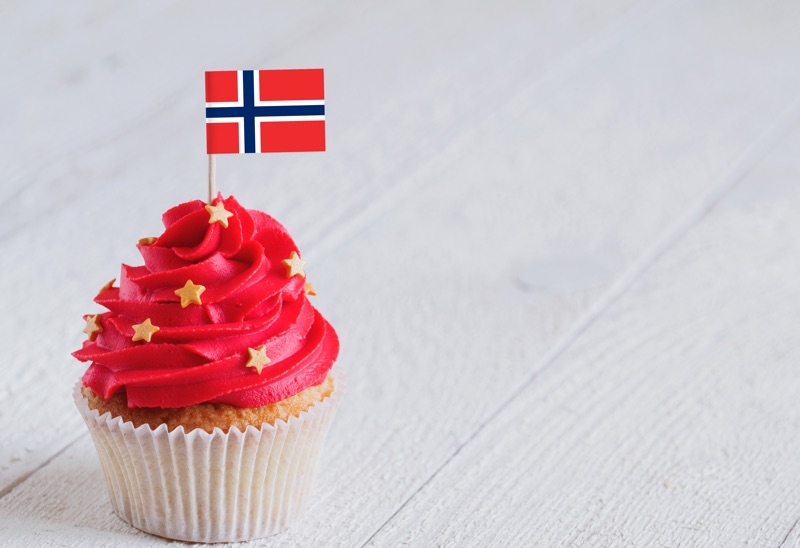
Penny Wilson wrote on The Conversation that junk food is generally considered to be food that lacks nutrients but is high in calories mainly made up of fat and sugar, but that cake offers more.
“I’m not talking about the airy confection-infused types with chemical concoctions to preserve, flavour, colour and aerate. I mean cake as a symbol of joy and celebration; the conveyor of history, culture and tradition; as a token of love, belonging and social occasion.”
She goes on to say that some cakes have much in common with bread, and that regardless of content, cake is about bringing people together and helping to create a sense of place and connection.
“There is too much history and tradition bound up in cakes to eliminate them from our diet. Eat cake, not as a substitute for real food, but as a normal part of life and living. And perhaps as a bridge over conflict, discrimination and ignorance”, she says.
So what I'm hearing is that while cake isn't good for the waistline, a little every now and then is fine, and may actually be good for the soul. I can buy into that!
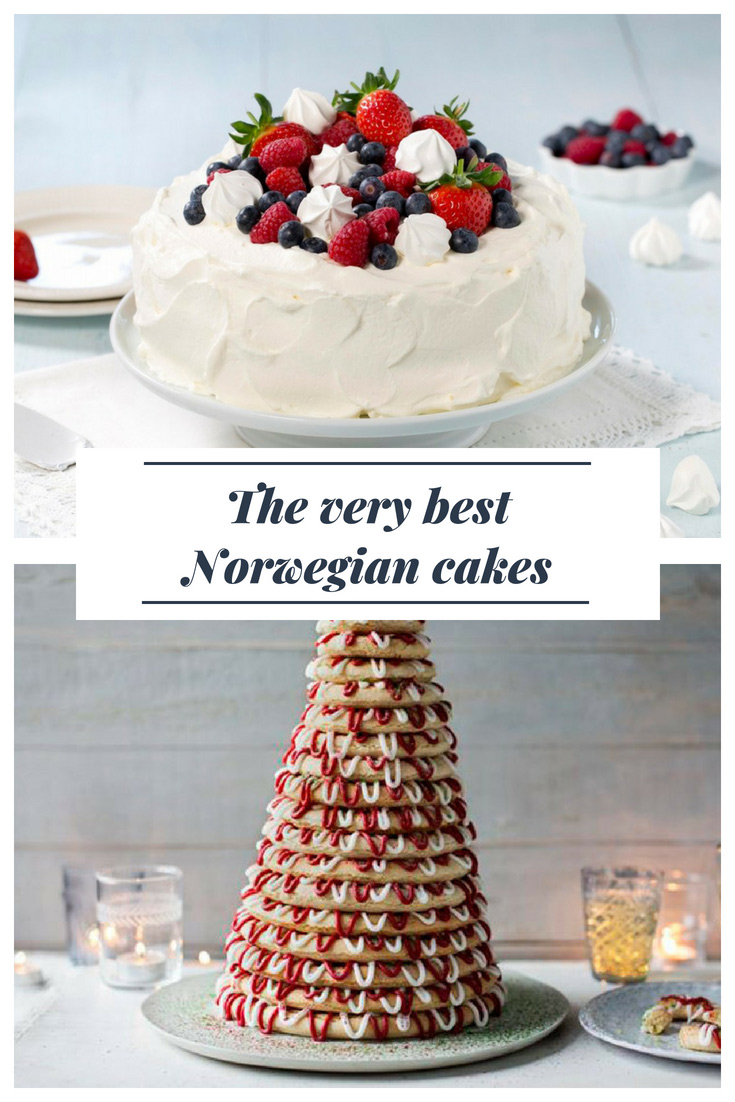
If you enjoyed this post, why not share it on Pinterest, so you can make your friends and followers hungry too?


Hello, where can I find recipes for these amazing cakes .
I to would love the recipe for the cakes 😊
Would you send them to me if you get them.
Thanks
Pinterest (Norway)
David loved the email this week – so many good articles as usual.
Re baking and your shortage of caster sugar, if you have a liquidiser or blender you can whizz up normal sugar to make caster sugar – just watch not to do it for too long or you’ll have icing sugar !
Thanks so much for the tip!
Hi
Do you have the Apple cake recipe? Thanks.
Gayle
Regarding the making of Bløte kake, you missed out a couple of important factors when it comes to the three layers. Each layer should be soaked with some fruit juice and then added a thin layer of strawberries for instance on top and the n the whipped cream between each of the layers. You can use different yams, but you should always soak the layers with some kind of fruit juice and then the whipped cream. You can also mix the fruit and ad chopped walnuts to the cream as well. Or make vanilla cream and mix it with the whipped cream. But always remember to soak the layers with a little fruit juice to make the cake delicious.
BLOTKAKE LAYERS IS ALSO YUMMY GOOD SOAKED W/LIQUOR – MAYBE DILUTED A BIT W/WATER. THIS FROM MY OSLO-BORN MOTHER. (DECEASED IN ’94)
I always have a problem with the amount of wetness! How do the best bløtkaker stay moist without getting soggy?
Thanks for any tips!!
Ps my grandma used jam in the layers and a sprinkle of powdered gelatin in the cream 🙂
Kransakakke molds are available on Amazon.com. Recipe in English is included.
Where is the Mor Monson an absolute favourite!!!
Hello, where can I find recipes for these cakes?
Thank you
Best regards
I’d like to make these cakes. Have you posted the recipes elsewhere??
I would love the recipes for these cakes!
Would love the recipes for Suksessterte Cake and the Krydderkake, Spice Cake. Enjoyed reading about all of these! our family loves The Kransekake, and have used it for Weddings, Birthday, etc.
Oh my, I think I just gained 5 kg just by reading this article, but it was well worth every sigle one of the 5’000g!!! Thanks!
You forget to mention that Norwegians don’t bake as often as Americans do because, partly, eggs are so expensive! Do you still have to get a prescription in order to buy cream of tartar?
Come on, you think Norwegians don’t bake as much because of eggs being expensive?? First of all I don’t find eggs expensive at all, and if they were cheaper I’d be concerned about the hens’ welfare. And on the other hand, have you really been to the country side here? I’m not so sure they bake less here…
Love to read your articles and for those with awesome reference to Norwegian food/baking there is no recipe or reference on how to get the recipes. Help!
I would love the recipes used in this article!
I have recently retired and have been baking as a hobby. I’ve made the Kransekake several times but would love the recipes for the other cakes you mention. Where can I get them?
Johanna Olson
My sister married a Norwegian and lives in Gjovik now we have the tradition of making a Firklover Kake for birthdays and celebrations. For those wanting a recipe for this easy delicious cake it is 3 eggs, 3dl sugar, 1 tablespoon cocoa, 1dl strong coffee in water. 3dl flour, 1and half teaspoons baking powder. Method. whisk egg whites and sugar to peaks, add cocoa mixed with coffee, sieve in flour and baking powder gently fold and bake in a 10 inch tin at 170 for 30 to 40 mins. Slice in half and fill with thick custard (or cheat with a carton) and top with 200grms melted chocolate (Firklover bar is possible ) mixed with 30grms melted butter and half dl of milk. Sprinkle with chopped hazelnuts.
Suksesskake “Low carb”? If there is sugar in it, it is NOT low carb 😉